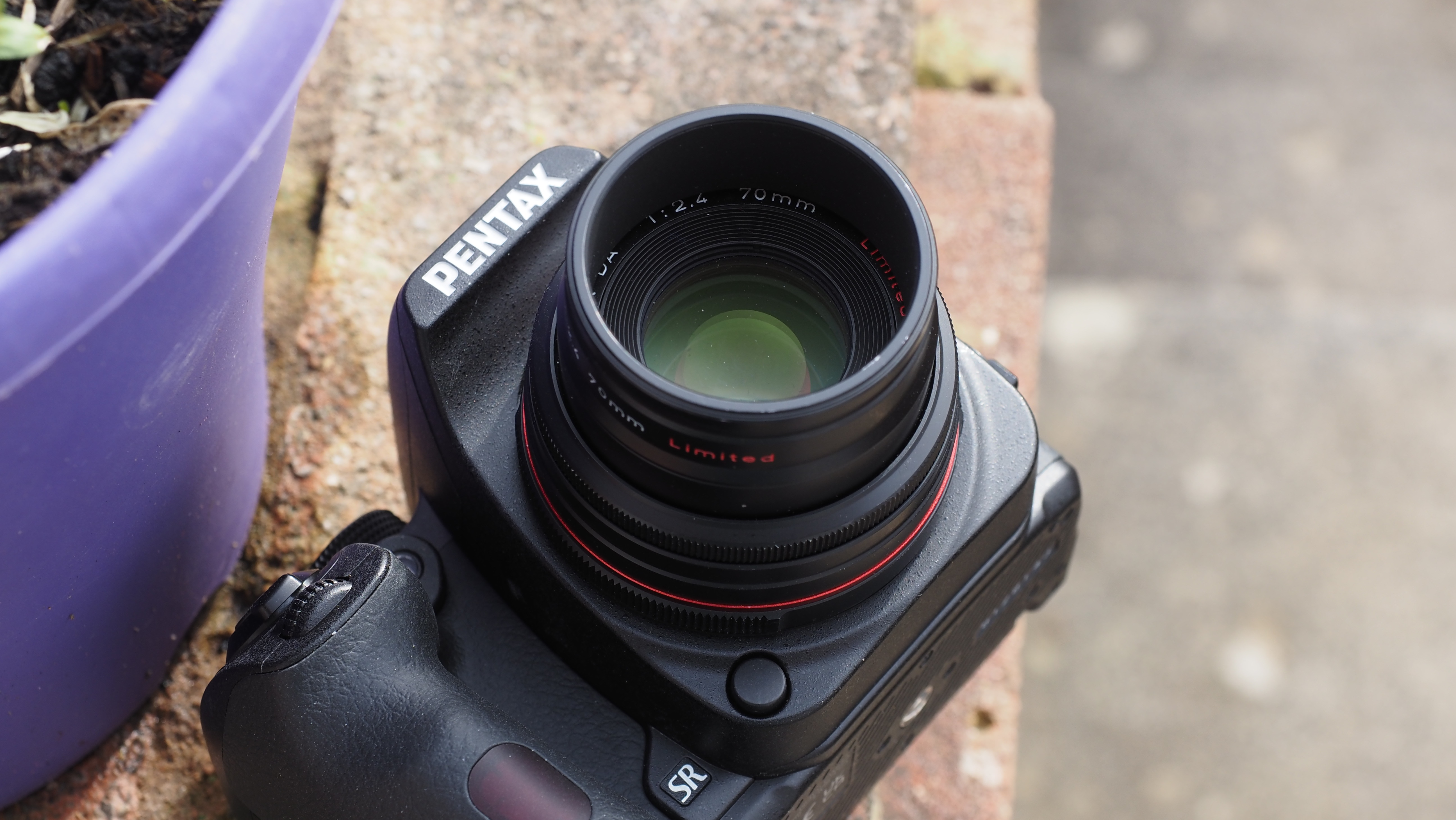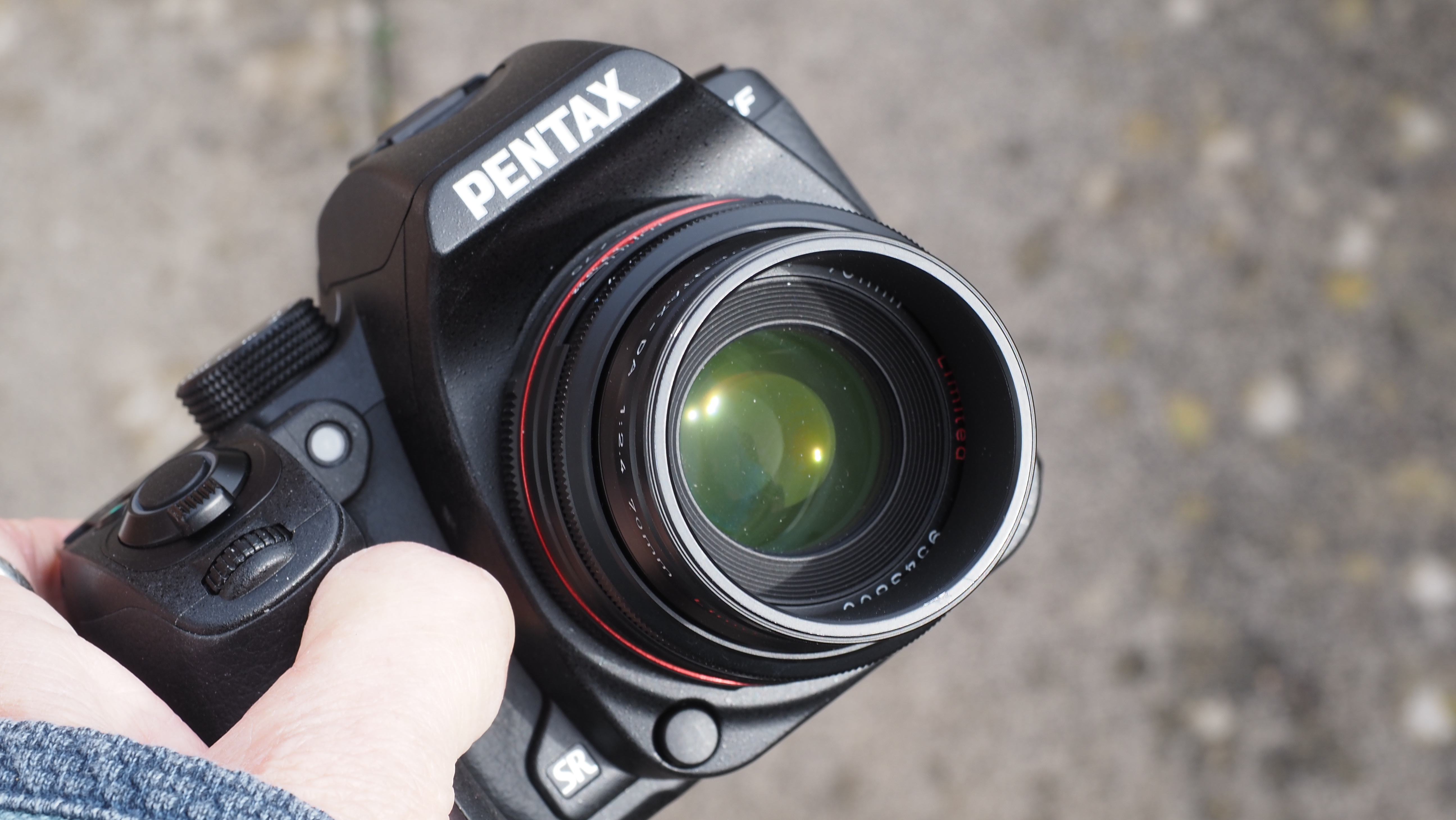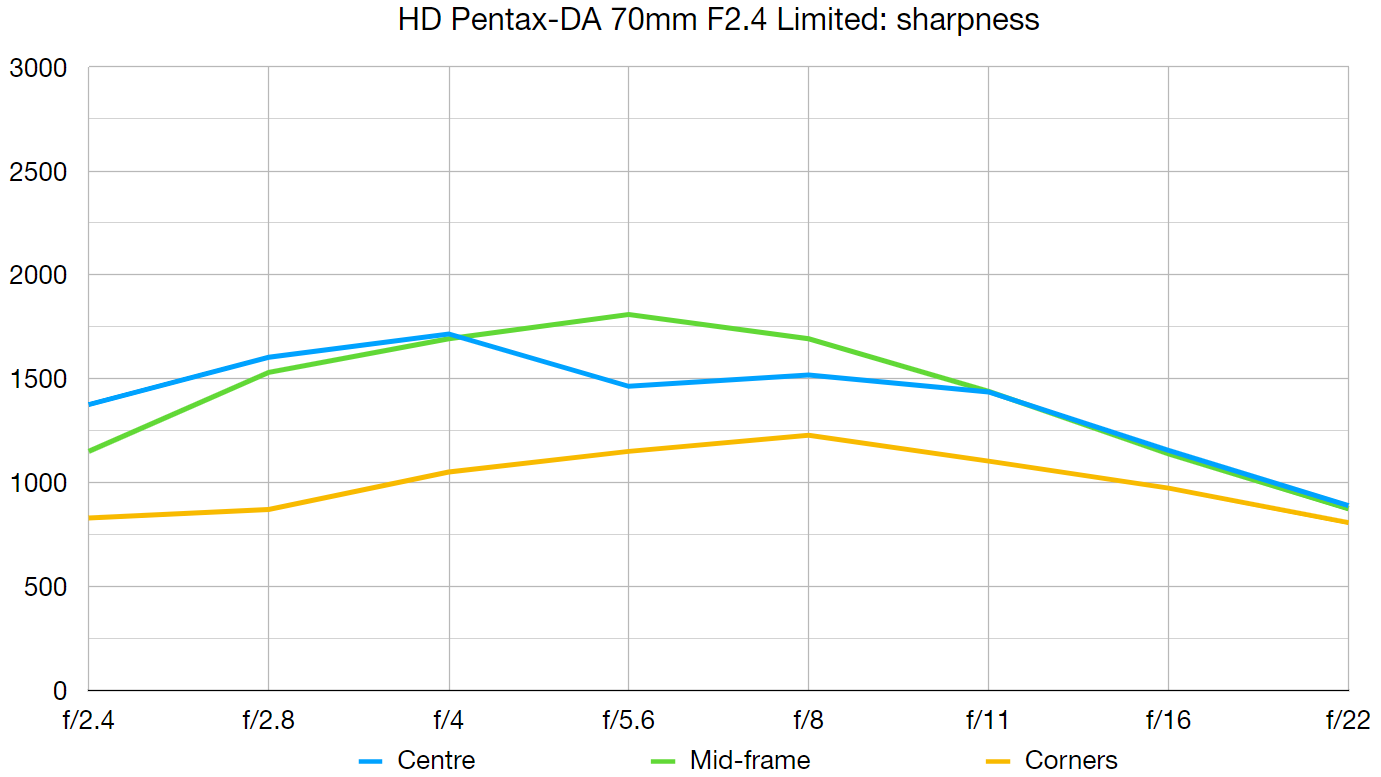Digital Camera World Verdict
How can a 70mm lens be this small? Indeed, half of the HD Pentax-DA 70mm F2.4 Limited's length is taken up by a detachable retracting lenshood, so it's smaller even than our pictures suggest. It even has quite a respectable maximum aperture of f/2.4. Only two things go against it: one it's that it's an APS-C lens with an effective focal length of 105mm, which is pretty long as a compact walkaround lens; the other is that it has no AF motor of its own, so it's driven by the crude mechanical AF drive in Pentax camera bodies.
Pros
- +
Exceptionally small for its focal length
- +
F/2.4 maximum aperture
- +
Decent optical quality
Cons
- -
Noisy body-driven AF
- -
Do you need a pancake telephoto?
Why you can trust Digital Camera World
The HD Pentax-DA 70mm F2.4 is a very odd lens in all sorts of ways. It looks like a retro analog lens, but it lacks an aperture ring and is very much a digital re-imagining of a ‘classic’ lens. The focal length sounds more appropriate for a full-frame camera, but in fact this is an APS-C lens. And it has the dimensions of a pancake lens, but the effective focal length (105mm) of a short telephoto.
Even the maximum aperture is odd, which at f/2.4 is neither fast nor slow. It’s impressive for a lens this small to be so fast, but at the same time, it’s far from ‘fast’ by modern standards.
So what we’re left with is a moderately fast pancake telephoto for Pentax APS-C DSLRs, which is not a category we, or perhaps anyone else, would have thought of.
You can check out our buying guide to what we think are the best Pentax lenses, and if you're also interested in the cameras, see our guide to the best Pentax cameras. We tested the HD Pentax-DA 70mm F2.4 on the just-released Pentax KF.
Specifications
Mount: Pentax KAF
Full frame: No
Autofocus: Camera body
Stabilization: No
Lens construction: 6 elements in 5 groups
Angle of view: 23°
Diaphragm blades: 9, rounded
Maximum aperture: f/2.4
Minimum aperture: f/22
Minimum focusing distance: 0.7m
Maximum magnification ratio: 0.12x
Filter size: 49mm
Dimensions: 63 x 26mm
Weight: 131g
Key features
The HD Pentax-DA 70mm F2.4 Limited is certainly small. It’s not big in our hands-on photos, but half of that length is taken up by the detachable lens hood, which itself has an extending telescopic section for full flare protection.
If you take that off you’re left with a lens that looks unfeasibly slim for a 70mm optic, but that’s what it is and, on the APS-C cameras it’s designed for, it’s actually equivalent to a 105mm f/2.4.
The best camera deals, reviews, product advice, and unmissable photography news, direct to your inbox!
There is a profound disconnect between the size of this lens, its focal length, and its angle of view.
There’s not too much more to say about this lens than that, except that it's optical construction is relatively simple, with just 6 elements in 5 groups, there’s no optical stabilization (Pentax DSLR bodies have an ‘SR’ IBIS system) and there’s no integral AF motor, and focusing is driven by a motor in the camera body. Oh, and you can get this lens in a black or silver finish.
Build and handling
The autofocus system is an issue. Some Pentax lenses have their own AF motors, but many don’t, and with those that don’t, autofocus is a pretty crude and noisy business.
The HD Pentax-DA 70mm F2.4 Limited has a nice feel and a nice finish, but focusing is not its strong point. You can focus manually, of course, but DSLR viewfinders don’t have the precision you need for critical focus, so you may have to fall back on manual focus and zone/hyperfocal focus using the distance scale and depth of field index markings. Unfortunately, the focus distance scale is short and imprecise – it would be fine for a short focal length lens with lots of depth of field, but not here.
Performance
The lab tests confirm what we found in real-world shooting, that this is actually a very capable lens despite its tiny dimensions. Its optical performance is good rather than excellent, and while it is quite sharp in the center of the frame, it is visibly softer at the edges, even at its best aperture of f/8.
The lab results show low levels of chromatic aberration but one or two of our test shots show pronounced purple fringing around bright areas. We saw this too in our Pentax DA★ 55mm F1.4 SDM review, so we're starting to wonder if this is a sensor issue rather than lens-related – we tested both on the new Pentax KF.
Lab tests
We run a range of lab tests under controlled conditions, using the Imatest Master testing suite. Photos of test charts are taken across the range of apertures and zooms (where available), then analyzed for sharpness, distortion and chromatic aberrations.
We use Imatest SFR (spatial frequency response) charts and analysis software to plot lens resolution at the center of the image frame, corners and mid-point distances, across the range of aperture settings and, with zoom lenses, at four different focal lengths. The tests also measure distortion and color fringing (chromatic aberration).
Sharpness:
Sharpness is acceptable but never impressive, regardless of aperture. Sharpness is actually better in the mid-frame than in the center at f/5.6 and f/8, though we suspect this could be just a peculiarity with our sample lens. At least sharpness is very consistent between the center and mid-frame at other apertures, only dropping off noticeably in the extreme corners.
Fringing:
Lateral chromatic aberration is consistently visible in the corners of frame at all apertures, though never to a degree where it's likely to become distracting.
Distortion: 0.43
There's slight pincushion distortion when in-camera lens corrections are disabled, but you'll rarely – if ever – notice it.
Verdict
The HD Pentax-DA 70mm F2.4 Limited is remarkable for its size. This is a lens you could put in a coat pocket or even, if you took off the hood, in a trouser pocket. It has the dimensions of a pancake lens and the magnification of a telephoto – if that's something you actually need. Bear in mind, that while this lens might be tiny, Pentax DSLRs are not, and also that a 105mm effective focal length is pretty long for general use. Optically, the HD Pentax-DA 70mm F2.4 Limited is quite good, but only real Pentax fans will be happy to put up with the rough and often hesitant body-driven autofocus.
Read More: You can find out more about the Pentax DSLR system with our guides to the best Pentax cameras and best Pentax lenses.

Rod is an independent photography journalist and editor, and a long-standing Digital Camera World contributor, having previously worked as DCW's Group Reviews editor. Before that he has been technique editor on N-Photo, Head of Testing for the photography division and Camera Channel editor on TechRadar, as well as contributing to many other publications. He has been writing about photography technique, photo editing and digital cameras since they first appeared, and before that began his career writing about film photography. He has used and reviewed practically every interchangeable lens camera launched in the past 20 years, from entry-level DSLRs to medium format cameras, together with lenses, tripods, gimbals, light meters, camera bags and more. Rod has his own camera gear blog at fotovolo.com but also writes about photo-editing applications and techniques at lifeafterphotoshop.com









